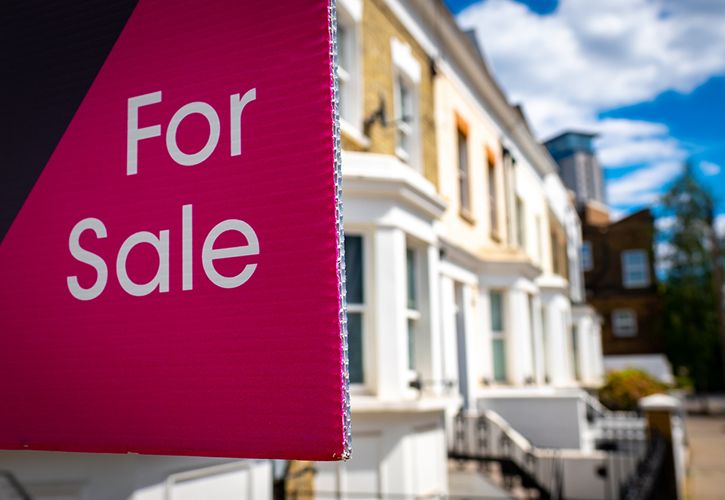UK DIY News
Housing Market Maintains Momentum Despite More Tentative Top-End

- The average price of property coming to the market for sale drops by just £21 this month (0.0%) to £375,110 after reaching a record high in May, as prices in June follow their familiar seasonal pattern of recent years and remain flat:
- Less expensive and more northerly regions are seeing stronger price growth this month, with five of the six cheapest regions reaching new price records while the higher-priced East of England and London lag behind
- Less expensive and more northerly regions are seeing stronger price growth this month, with five of the six cheapest regions reaching new price records while the higher-priced East of England and London lag behind
- The majority of buyers and sellers have continued their plans since the election was called, with the only sign of election caution being a slight drop in the number of new sellers especially at the typically more discretionary top-end of the market:
- Over the last four weeks, the number of sales being agreed has stayed steady at 6% higher than a year ago
- Buyer demand has also remained stable and is now 5% higher than last year. This supports Rightmove’s poll of over 14,000 people, where 95% of those planning to move home said that the election will not affect their plans
- In the two weeks since the surprise election announcement, the number of top-end sellers coming to market is 3% lower than a year ago, versus being 11% higher in the previous two-week period
- Over the last four weeks, the number of sales being agreed has stayed steady at 6% higher than a year ago
- Stubbornly high mortgage rates continue to stretch affordability, with many future movers likely to have a closer eye on when the first Bank of England rate cut might be, rather than pre-election housing market promises:
- The average 5-year fixed mortgage rate is now 5.04%, compared with 4.94% in January
The average price of property coming to the market for sale drops by just £21 this month (0.0%) to £375,110, as prices in June follow the same seasonal pattern as recent years and remain flat after reaching a record in May. Price trends differ across Great Britain, and the strongest price growth this month is occurring in the less expensive and more northerly regions, with five of the six cheapest areas reaching new price records. By contrast, the higher-priced East of England and London regions lag and see this month’s only regional price falls.
Now that a General Election has been called, Rightmove’s whole-of-market data suggests that activity is largely remaining stable, with the market maintaining its 2024 momentum. The number of sales being agreed and the number of buyers sending enquiries to agents remain steady, with the vast majority of those already in the home-moving market continuing with their plans. One exception is possible election caution among some would-be sellers, which is most pronounced for those at the typically more discretionary top end of the market, some of whom appear to be pausing their plans to see how the next few weeks unfold.
Tim Bannister Rightmove’s Director of Property Science, said: “It’s always difficult to predict how home-movers will react to sudden uncertainty, but looking back through our data, we can see that during previous election campaigns, market activity has remained largely steady. This election has followed a similar pattern so far, and the responses from our poll of over 14,000 people also supports the data, with the vast majority of respondents saying they will carry on with their home-moving plans. However, some potential sellers appear to be watching and waiting rather than taking action, evidenced by a dip in the number of new sellers coming to market, particularly at the top-end. This is understandable when many of these sellers have more flexibility over when they act, but overall, it appears to be business as usual for the mass-market.”
Over the last four weeks, the number of sales being agreed between buyers and sellers has remained stable at 6% above the same period last year, emphasising that those in the market are generally continuing with their plans despite the surprise General Election. Buyer demand, as measured by the number of people contacting estate agents about homes for sale, has also remained steady and is currently 5% higher than last year.
However, one area of activity that does appear to have seen some impact from the election being called is the number of new sellers coming to market, mainly due to some hesitancy at the top end. In the last two weeks, the overall number of new sellers coming to market is just 1% higher than the same period a year ago. By contrast, during the two weeks prior, the number of new sellers deciding to come to market was a more robust 6% above 2023’s level, highlighting a slight drop off in new seller activity as news of the surprise election announcement caused some hesitancy, This dip is most prominent in the top-end sector, covering the largest five-bedroom-plus properties and four-bedroom detached houses. The number of new sellers choosing to come to market in the last two weeks in this sector is 3% lower than the same period a year ago, compared with being 11% higher than 2023 in the previous two weeks.
Housing has started to play a bigger role in the election campaign, with a flurry of manifesto pledges shared in recent days. It has been encouraging to see housing get more attention, however, many manifesto promises so far are continuations of existing schemes, revivals of old policies, or ideas which are only likely to help very specific parts of the market. The timing of Bank of England rate cuts is likely to be of greater concern than manifesto housing promises to the majority of home-hunters. Mortgage rates remain stubbornly elevated, with the current average five-year fixed rate now at 5.04%. While this is improved from the peak of 6.11% in July 2023, it is still higher than the beginning of the year when it was 4.94%. At the start of 2024, many will have been expecting, or at least hoping, to see some significant falls in mortgage rates by the halfway point of the year. If a Bank of England Base Rate cut can lead to lower mortgage rates, it will have a much wider and immediate impact on the market than the bespoke housing policies announced so far.
Tim Bannister Rightmove’s Director of Property Science, added: “Some of the housing proposals announced are a good start with positive intentions, however they could go further in supporting the majority of first-time buyers to get onto the ladder, or helping people in different circumstances to move. Mortgage rates have been elevated for much longer than most expected, and a first cut to the Base Rate would be a big boost to mover confidence, as well as having a far-reaching impact on the market should it, as expected, lead to lower mortgage rates. Lower mortgage rates will have the most immediate impact on the market, however we hope that well-thought out housing policies will lead to sustainable market improvements over the long-term.”
Experts’ views
Ian Preston, Group CEO at Preston Baker in Leeds, said: “The government’s decision to call a general election hasn’t made an appreciable difference to market conditions. We saw a small dip last week in listing numbers, but this is easily explained as the traditional dip that we would normally see in the half term week, when more families choose to go away. Whichever government is chosen, the priority must be increasing the supply of new homes. Investment in the local authority planning system, to speed up applications, is the priority. The rental price growth has been extraordinary over the past few years, and landlord friendly policies will be required to attract landlords back into the market.”
Source : Rightmove
Image : William Barton / iStock / 1304922903
Thank you for the excellent presentation that you gave at Woodbury Park on Thursday morning. It was very interesting and thought-provoking for our Retail members. The feedback has been excellent.











































